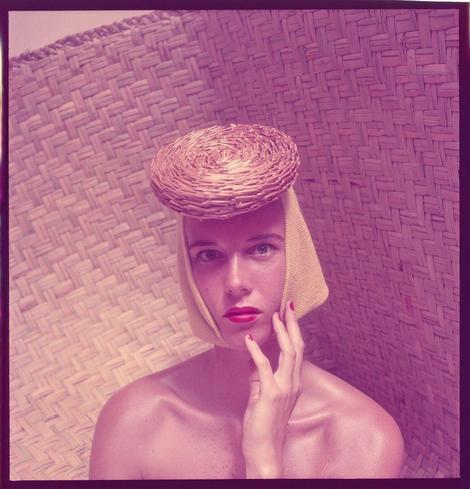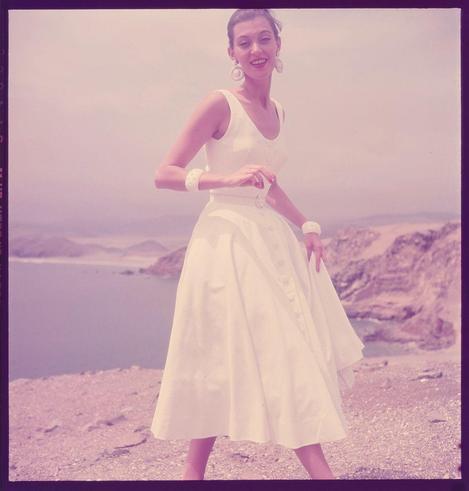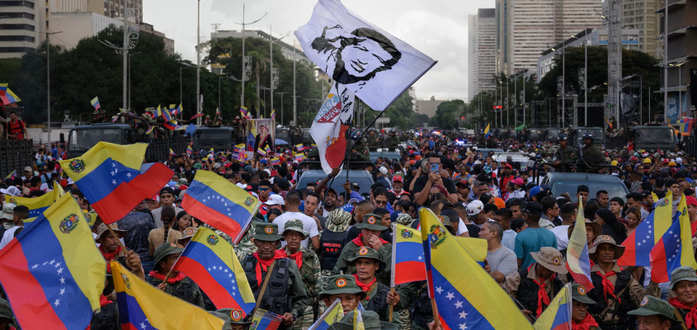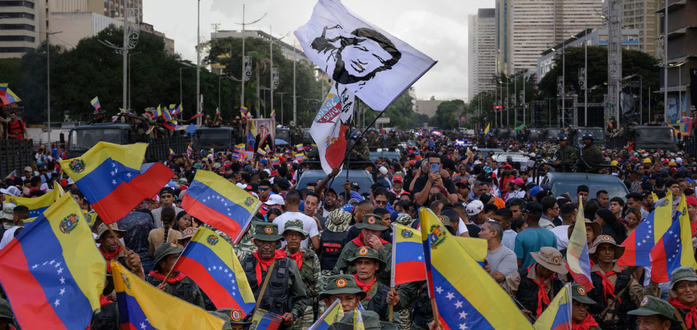Uruguay Achieves 99% Green Energy After Seeking the Lowest Price for Consumers
#southamerica
Great green #macaws are supremely intelligent can live to up to 70 years old. They are critically endangered from #palmoil #meat and #soy #deforestation in #SouthAmerica. Help them by being #vegan and #Boycottpalmoil #Boycott4Wildlife @palmoildetect.bsky.social https://wp.me/pcFhgU-183?utm_source=mastodon&utm_medium=Palm+Oil+Detectives&utm_campaign=publer
Venezuela Revokes Operating Rights Of 6 Foreign Airlines Amid Rising Tensions http://dlvr.it/TPVW4N #aircraft #Airlines #latinamerica #southamerica
Liga Anarquist- Rio de Janeiro is now part of the growing network of resistance at A Radical Guide.
Explore radical space in #brazil #riodejaneiro #southamerica: https://www.radical-guide.com/listing/liga-anarquist-rio-de-janeiro
#RadicalHistory #GrassrootsMovements #Liberation #MutualAid #Antifascism
Interview: Venezuela’s Militias and the Civil-Military Union
Current US aggression against Venezuela is an attempt to force regime change under the guise of ‘fighting narco-terrorism’.
In recent months the US has: egregiously bombed several boats in the Caribbean, killing dozens of people; has placed a $50m bounty on the head of democratically-elected President Nicolas Maduro; has terminated diplomacy with Venezuela; has stationed close to 10,000 military personnel, a nuclear powered attack submarine, F-35 fighter jets and military helicopters in the Caribbean close to Venezuelan territory and has hinted at a ground invasion of Venezuela. On 15 October the US military confirmed it has drawn up plans for potential strikes inside Venezuela and most recently the Trump administration’s war drive has expanded to include Colombia as Colombian President Gustavo Petro refuses to work with the US to destroy the Bolivarian Revolution.
Venezuela is ready and prepared to resist an escalation in the imperialist aggression it has faced since it launched its Bolivarian Revolution in 1999. Carmen Melendez, mayor of Caracas, declared ‘if [the US] dares [to invade] we’ll be waiting for them here […] and we will use all of the weapons we have to defend the homeland’, while Vice President Delcy Rodriguez vowed that ‘we will never hand over our homeland’. Maduro is activating defence strategies in zones across the country as part of the 27-task ‘Independence Plan 200’ and the National Bolivarian Armed Forces of Venezuela are ready to mobilise to safeguard the country’s borders and protect key infrastructure.
In Venezuela it is not just the armed forces who are ready to defend national sovereignty. Nine million Venezuelans across the country, out of a population of 28 million, make up a people’s militia united with the armed forces, armed and organised to defend their homeland and Revolution from imperialist attack. This example of a civilian population working hand-in-hand with their armed forces as a unitary force is one of the many remarkable examples of participatory democracy in Venezuela’s Bolivarian Revolution.
Armando Urgelles, a member of the Bolivarian militia, 5th special component of the Bolivarian Armed Forces, and member of Venezuela’s United Socialist Party of Venezuela, spoke from Caracas to Ria Evelyn from Red Spark. In the below interview he outlines the historical roots and ideological basis of the civil-military union, how it is structured, how it practically functions and how it is preparing for invasion.
Red Spark: What is the ideological basis of the militias?
Armando: The ideological basis of our militias is rooted in anti-colonial struggle. Resistance to Spanish conquest in the 16th century was led by Aboriginal peoples. The form of social organisation of our indigenous peoples was not a pyramid-type hierarchical order with a single chief – we had many chiefs – so Spanish colonisers found they could not dismantle the entire social, political and military structures of our society by killing the head of a pyramid. Our chiefs organised resistance, including the great indigenous leaders Great Cacique Guaicaipuro and Great Cacia Uriquia, forming liberation movements which continued until the independence era.
Then we were given our most well-known heroes: Liberator Simon Bolivar and Fransisco de Miranda, precursors of independence and ideologues of Panamericana. They gave rise to the beginning of our independence from Spanish rule in the 19th century and promoted resistance to be fought by general militias made up from the people themselves. At first these militias were largely made up of the white Creoles, but as the fight for independence deepened the entire population unified without discrimination to beat the brutal royalist forces. Bolivar and the people’s militia achieved liberation in our part of the region with the decisive Battle of Carabobo. The Liberator decided they must continue to carry the campaign south to free this entire region from the Spanish in order to guarantee full independence and sovereignty. Two thirds of our population died fighting the Spanish Empire. We must also mention Ezequiel Zamorana, who led the peasant insurrection 1859-1863.
With these emancipatory examples, when Commander Hugo Rafael Chavez came to power he was inspired to replace the military doctrine imposed on us by the gringos with a Bolivarian model as part of the 1999 Constitution. This is based on a model where various territories within Venezuela have independent social organisation, but each has a defence strategy which integrates for total territorial defence.
Article 322 of our constitution establishes that the state is responsible for the security of the nation. But it also establishes that defence is a shared responsibility between the State and civil society. Private or public entities that are part of this territory have the duty to defend it. Article 326 outlines that the shared responsibilities of the military and civil population in defence of the nation includes in political, economic, social, cultural, geographic and environmental spheres. Our population must be prepared in all these areas, including the military, of course, to defend the nation, sovereignty, independence and our freedom.
This gives the militia a revolutionary patriotic ideological formation and keeps our morale high. We understand that we must rise up and continue to advance on our historical roots of our indigenous resistance leaders, the Liberator Simon Bolivar, General Fransisco de Miranda and Zamorana.
RS: How are the militias organised?
A: The militias are organised on three levels to ensure the total defence of the territory. First, on the local level we use the territorial methodology of the Local Supply and Production committee (CLAP) networks to organise (the CLAP network ensures every family in need receives food packages while we are subject to this economic siege and blockade). Then, several local units come together to form Popular Units of Integral Defence. Finally, Popular Units of Integral Defence come together to form the Integral Defence Popular Bases (IDPB) which are based within parishes and relate to voting areas.
To enlist in the militia, you must speak to the commander of the IDPB you would operate within. The commanders of these units are deployed by the National Bolivarian Armed Forces, so you can see the unitary force of the people and the Army.
Every week we participate in revolutionary patriotic training which includes theory and political education to learn about our history, our roots, our struggles. Having this understanding of our national identity is what motivates a militia member to defend ourselves and our territories, our homes, our families, our history, our geography.
RS: What is the relationship between the Bolivarian Armed Forces and the civil militias?
A: The relationship that exists is one of unity. The civic-military union is one in which the professional Bolivarian Armed Forces, high-ranking officers graduated from military universities, whether from the Army Air Force or the Navy, perfectly integrate with the Bolivarian Militia.
In order to develop some strategies of defence and resistance against the enemy, the relationship that exists is a harmonious one, a relationship of brotherhood. It’s not like in countries where the bourgeoisie dominates, where the armed forces are practically an occupying force against the interests of the population.
RS: How are the militias preparing to defend Venezuela from attack?
A: Any man or woman above the age of 18 can be a member of the Venezuelan militia. We have grown so much recently, from four million to nine million in less than two months. But how did we even have four million people in the militias? Because of the crucial role the militias have had in supporting the process of profound transformations that we are experiencing in Venezuela in the Bolivarian Revolution. People join voluntarily out of a desire to build a new, caring, peace-loving society. And recently we have grown much more rapidly in response to the threats from Donald Trump against our sovereignty in independence, with a series of unfounded accusations about Venezuela regarding drug trafficking. We know that the largest producer and exporter of cocaine is Colombia and we know that fentanyl is produced in high-tech, non-clandestine laboratories, mainly by pharmaceutical companies located in the United States, Canada or Mexico.
It just so happens that Venezuela has many critical and strategic minerals for the functioning of the capitalist system. It is common knowledge that we have the largest oil reserves in the world. We have almost four hundred billion barrels of oil under this soil, without counting what may be in the territorial sea that is not fully accounted for. We also have huge reserves of gold, copper and coltan. We have fresh water, a river, one of the largest reserves of fresh water, we have biodiversity and fertile land. Venezuela is a country of strategic geographical importance. The materials we have are necessary to keep the dominant capitalist system functioning.
So, in the face of this threat, our militias are prepared and we have very high morale. Just as the militias are prepared for civil duties, we are prepared in the strategic concept of permanent war. We understand the necessity of resistance, of the people in arms and of providing material and logistical support to the entire resistance effort of the armed struggle. We are constantly training in the tactical methods of revolutionary resistance and training in different disciplines of combat so that we can mesh with other combatants in other areas. The militias are prepared, organised and trained to be able to execute any type of manoeuvre in order to resist any attempt to desecrate Venezuelan sovereignty.
We will defend our homeland. If we must resist for 50 years, or 100 years, we will do it and we will resist with everything we have at hand. We will not surrender our homeland to any imperialist power.
source: Red Spark
https://abolitionmedia.noblogs.org/?p=24042
#imperialism #repression #southAmerica #usSavages #venezuela
Organización Anarquista de Tucumán is now part of the growing network of resistance at A Radical Guide.
Explore radical space in #argentina #southamerica #tucuman: https://www.radical-guide.com/listing/organizacion-anarquista-de-tucuman
#RadicalHistory #GrassrootsMovements #Liberation #MutualAid #Antifascism
Colombia Bans All New Oil and Mining Projects in its Amazon–an Area the Size of Sweden
Maduro-tied Cartel de los Soles to be labeled a terror organization
CARACAS, Ve…
#NewsBeep #News #Headlines #AdamIsaacson #CentralAmerica #DiosdadoCabello #DonaldTrump #Drugcrimes #Generalnews #Indictments #LatinAmerica #MarcoRubio #Militaryanddefense #NicolasMaduro #PeteHegseth #Politics #SouthAmerica #Terrorism #U.S.DepartmentofJustice #UnitedStates #UnitedStatesgovernment #Us #USA #Venezuela #Venezuelagovernment #VladimirPadrinoLpez #Washingtonnews #Worldnews
https://www.newsbeep.com/269557/
Think about it... with the start of the Russian invasion of #Ukraine, #Europe sought to reduce its dependency of #Russia for natural gas, to make itself dependent on the #UnitedStates for the new liquid natural gas (#LNG)... there is pattern and there is still dependency. The Ukraine war pushed Europe into further dependency of the #US, where it is clearly not a trustworthy ally. Actually, by now, it is an ally on its way to full blown #fascism as well... and it's playing a device and conquer not only on what it considers it's playgrounds (#MiddleEast, #SouthAmerica, but also in Europe).
The beautiful and elegant #Oncilla is a #wildcat 🐱 found in #SouthAmerica. They are #vulnerable due to #deforestation for #gold and #palmoil 🌴⛔️ and are hunted for their fur 😭 #Boycottpalmoil #Boycott4Wildlife #BoycottGold4Yanomami @palmoildetect.bsky.social https://palmoildetectives.com/2021/08/14/northern-tiger-cat-oncilla-leopardus-tigrinus/?utm_source=mastodon&utm_medium=Palm+Oil+Detectives&utm_campaign=publer
Fashion, 1951 1951.
1 photograph : color transparency ; 120 medium format.
Toni Frissell Photograph Collection
Date:
Location:
The Toni Frissell Photograph Collection consists of photographs taken by American photographer Toni Frissell, known for her work in capturing portraits and landscapes during World War II.
Client: Harper's Bazaar
Biography:
Toni Frissell (1907-1988) was an American fashion photographer who worked primarily with women and portrayed them in various settings including studios and on location. She gained widespread recognition for her photographs, which showcased the talents of prominent female artists, politicians, and celebrities during the 1940s.
Keywords: Fashion Photography, World War II, Harper's Bazaar
#American #ToniFrissell #WorldWarII #Harper #HarpersBazaarA #southamerica #photography
Fashion, 1951 1951.
1 photograph : color transparency ; 120 medium format.
Title: The Toni Frissell Photograph Collection for Harper's Bazaar
Date: circa 1940s-1950s
Keywords: Toni Frissell, Harper's Bazaar, fashion photography, celebrity portraits, Patsy Pulitzer.
The collection features photographs taken by American photographer Toni Frissell, known for her work in fashion and celebrity portrait photography. The images depict prominent women of the time, including actress and socialite Patsy Pulitzer, who sat for several photographs in this series. Locations referenced include New York City, where Harper's Bazaar was published.
Biography:
Toni Frissell (1907-1988) was an American photographer known for her work in fashion and celebrity portrait photography. She began her career as a commercial photographer before transitioning to fine art, exhibiting her work internationally.
#HarpersBazaar #ToniFrissell #HarpersBazaar #PatsyPulitzer #American #NewYorkCity #Harper’sBazaar #PatsyPulitzer- #America #southamerica #photography
Andean #Condors of #SouthAmerica 🦃 😻 are the largest flying #birds in 🌍 have a wingspan of 3.3. mtrs, they soar 100's of km on the wind. Help them survive, be #vegan #Boycott4Wildlife 🍉🥒 @palmoildetect.bsky.social https://wp.me/pcFhgU-8S0?utm_source=mastodon&utm_medium=Palm+Oil+Detectives&utm_campaign=publer
Fashion, 1951 1951.
1 photograph : color transparency ; 120 medium format.
Toni Frissell Photograph Collection
The Toni Frissell Photograph Collection features images by American photographer Toni Frissell, a pioneering female photographer known for her portraits of influential women during the 1930s and 1940s.
The collection includes photographs taken for Harper's Bazaar, showcasing prominent individuals such as Barbara Mullen, a model who appeared in several of Frissell's works.
Biography:
Toni Frissell (1907-1972) was an American photographer known for her portraits of influential women during the 1930s and 1940s. She worked extensively with Harper's Bazaar and other publications, capturing iconic images of prominent figures.
Locations mentioned in the collection:
* New York City, USA (where Frissell likely photographed models and subjects for Harper's Bazaar)
Title devised by staff.
Date: Late 1930s to early 1940s
Keywords:
- Toni Frissell
- Photography
- Female photographers
- 20th-century American photography
- Harper's Bazaar
#American #ToniFrissell #HarpersBazaar #BarbaraMullen #Frissell #NewYorkCity #southamerica #photography
Fashion, 1951 1951.
1 photograph : color transparency ; 120 medium format.
Title: Patsy Pulitzer
Date: 1930s-1950s
Keywords: fashion, photography, Harper's Bazaar
The Toni Frissell Photograph Collection was a series of images created by American photographer Toni Frissell for Harper's Bazaar in the 1930s to 1950s. The collection features photographs of various women, including model Patsy Pulitzer, who was an American actress and fashion icon.
Patsy Pulitzer (1922-1994) was an American actress and fashion model who appeared on the cover of Harper's Bazaar in the 1940s. She is known for her striking looks and glamorous style, which influenced the fashion industry during the mid-20th century.
Toni Frissell (1917-2001) was an American photographer known for her elegant and sophisticated portraits of women. Her work appeared on the cover of Harper's Bazaar regularly, showcasing the latest fashion trends and styles of the time.
Locations mentioned in the collection include the United States, although the exact locations are not specified in the provided text.
#PatsyPulitzerDate #Harper #American #ToniFrissell #HarpersBazaar #PatsyPulitzer #theUnitedStates #southamerica #photography
Fashion, 1951 1951.
1 photograph : color transparency ; 120 medium format.
**Toni Frissell Photograph Collection**
The Toni Frissell photograph collection is a notable archive of images taken by renowned American photographer Toni Frissell (1907-1993). Born in Boston, Massachusetts, and later living in New York City, Frissell was known for her work as an associate director at Harper's Bazaar.
**Locations mentioned:**
* Boston, Massachusetts
* New York City
**Client:** Harper's Bazaar
The collection was created by the Library of Congress and is available online at https://hdl.loc.gov/loc.pnp/coll.090.
**Title devised by staff**
**Date:** Not specified
**Keywords:** Toni Frissell, American photographer, Harper's Bazaar
#ToniFrissell #American #Boston #Massachusetts #NewYorkCity #Frissell #HarpersBazaar #HarpersBazaarA #southamerica #photography
Fashion, 1951 1951.
1 photograph : color transparency ; 120 medium format.
Toni Frissell Photograph Collection
This collection comprises photographs of celebrities, socialites, and politicians taken by American photographer Toni Frissell in the mid-20th century.
Notable Individuals:
* Barbara Mullen (1911-1996): An American model who worked with photographers such as Edward Steichen and Toni Frissell.
* Babe Ruth (1895-1948) was mentioned but no additional information is available from this collection.
* Jacqueline Kennedy Onassis (1929-1994) was mentioned in the original text, she would be mentioned further if more photographs were provided.
Locations:
* The United States
Keywords: American photography, mid-20th century, celebrities, socialites, politicians.
#American #ToniFrissell #BarbaraMullen #EdwardSteichen #BabeRuth #TheUnitedStates #America #southamerica #photography
A Call for Mass Struggle Against U.S.-Led War on Venezuela and the Caribbean
The U.S. empire, unable to accept the sovereignty, progress, and moral example of the Bolivarian Revolution, is escalating its aggressive attacks against Venezuela. This is by no means an isolated struggle — what started as aggression against Venezuela and the Bolivarian Revolution has already claimed several dozen lives of working-class people in the Caribbean and Pacific, extended to threats against Colombia and its President, been linked to the militarization of Ecuador and Panama, and re-militarized Puerto Rico. This is yet another front in the struggle against U.S. imperialism, and it is interlocked with our movements for liberation in Haiti, Palestine, throughout Our Americas, across the Global South, and within the borders of the United States.
It is the wider ongoing pattern of regional militarization and imperialist control that fundamentally violates the principles of a Zone of Peace, as the U.S. Southern Command (SOUTHCOM) has systematically transformed the Caribbean into a staging ground for its hegemonic projects. Puerto Rico, a colonial territory, is consistently used as a strategic site for the deployment and launch of military exercises, normalizing its status as a forward operating base, while nations like Guyana and Trinidad & Tobago are treated as subordinate “puppet states” that risk their own sovereignty to facilitate U.S. objectives. Simultaneously, Haiti has been cast as a laboratory for imperial policy, where an accelerated militarization and occupation over the last four years has provided a blueprint for intervention. The racist and cynical designation of Haitian paramilitary armed groups as “terrorists” to be eradicated by US-led occupation has done nothing to relieve impoverished, marginalized Haitians from the violence of these “gangs” — because they are a direct consequence of imperialism. And yet, the excuse and label of “terrorism” has now been directly exported to the case of Venezuela. There, the U.S. Department of War cynically compares Caribbean people in fishing boats to Al-Qaeda, a transparent tactic to manufacture a pretext for full military invasion and attack.
To oppose this militarization and violence, and expel the nefarious forces of imperialist, colonial violence from our region, we must be steadfast in guaranteeing Our Americas as a Zone of Peace. This guarantee can only be built from the bottom up, through grassroots coordination and popular struggle that elevates/focuses on/highlights anti-imperialist national sovereignty. This is why the Popular Steering Committee for a Zone of Peace in Our Americas launched the U.S./NATO Out of Our Americas (UNOOAN) earlier this year. The UNOOAN is the mass organizational structure of the Zone Of Peace campaign designed to educate the public and strengthen an Americas-wide consciousness among the peoples of the region.
To move towards meeting this moment, BAP has joined with dozens of organizations calling for local actions during the week of November 15 – 23 to Defend Venezuela’s Sovereignty and connect our struggles. This week of action is a crucial beginning, but the gravity of the moment demands a coordinated and powerful response that moves from mobilization to sustained organization. Our movements must pull together our forces to expose the imperial lies that cynically label popular resistance as terrorism, broadening our analysis to expose the interlocked assaults on sovereignty across the region. And we must advance our collective consciousness beyond merely exposing these lies and toward challenging state violence and repression through popular power.
This mobilization must fuel the concrete building of national coalitions against SOUTHCOM and local self-defense networks, learning from the powerful examples of Venezuela’s communal militias and projects that embody popular democracy. The steadfastness of the Venezuelan people, who have joined these militias by the millions to defend their homeland, is not just an act of national resistance; it is a living proof that alternatives to imperial domination exist. The U.S. empire seeks to destroy the Bolivarian Revolution precisely because it shows we can fight for People(s)-Centered Human Rights (PCHRs) and for a true, just, militant peace. In unwavering solidarity with the Venezuelan people, we therefore commit to continuing this fight, organizing in solidarity with their masses and popular movements across the Americas to defend sovereignty, dignity, and the right to forge a different future.
Defend Venezuela’s Sovereignty!
U.S. & NATO Out of Our Americas!
Make Our Americas a Zone of Peace!
source: Black Alliance for Peace
https://abolitionmedia.noblogs.org/?p=23301
#aggression #blackAllianceForPeace #colonialism #gazaSolidarity #imperialism #southAmerica #venezuela
Tanda of the Week
https://fed.brid.gy/r/https://fedi.directory/tanda-of-the-week/

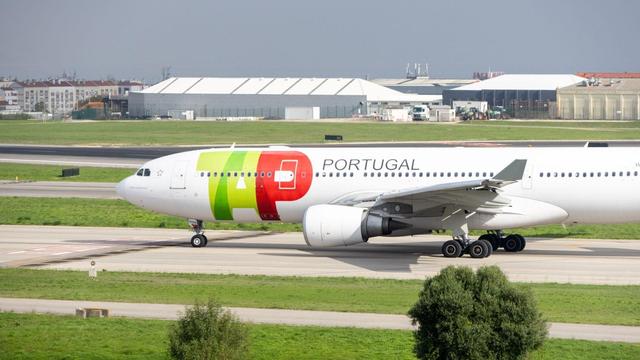
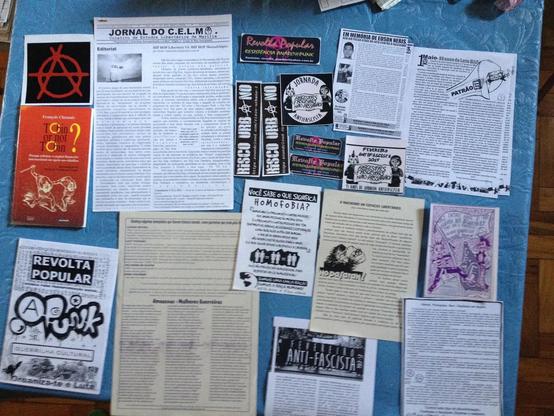
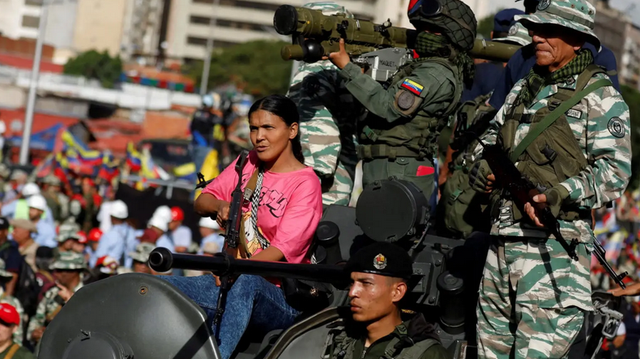

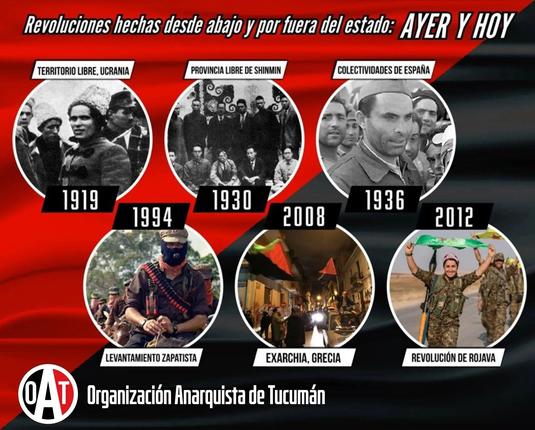


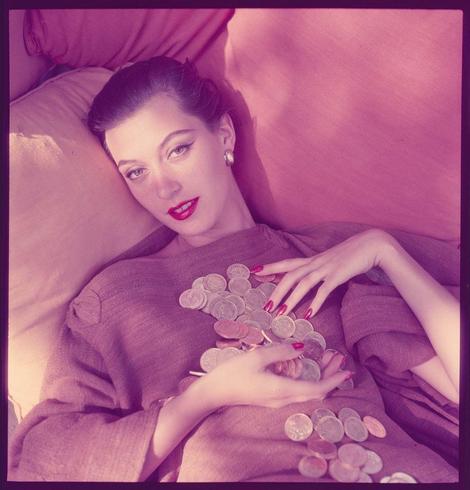
![The photograph is of a person adorned with an intricately woven straw hat and what appears to be handcrafted, possibly bamboo or rattan, hood-like structures draped over their shoulders. The individual exhibits pale skin and striking blue eyes, accentuated by a vibrant pinkish-red lipstick.
In the background, there's no distinguishable scenery; instead, it seems that this image is intended for fashion rather than storytelling. It exudes an aura of sophistication with its vintage aesthetic, featuring soft yet warm tones that might suggest the use of sepia or light pinkish-purple hues to emphasize a classic and timeless quality.
The hat worn by the person adds another layer of elegance and uniqueness; it's not only stylish but also handcrafted which may hint at artisanal craftsmanship. The textures created through the weaving technique are visible, emphasizing an organic feel that resonates with natural elements like straw or bamboo used in its creation.
Considering additional information provided about Toni Frissell – a renowned photographer known for her work on Harper’s Bazaar and portraits of celebrities including Patsy Pulitzer - this image could be from one such collection. It's likely part of the 1940s-50s era, which is corroborated by its vintage look.
Moreover, given that Toni Frissell was renowned for capturing fashion moments with a blend of style and substance, it’s plausible to infer that this photo might [...]](https://files.mastodon.social/cache/media_attachments/files/115/597/106/222/943/141/small/8090a70997accf24.jpeg)

